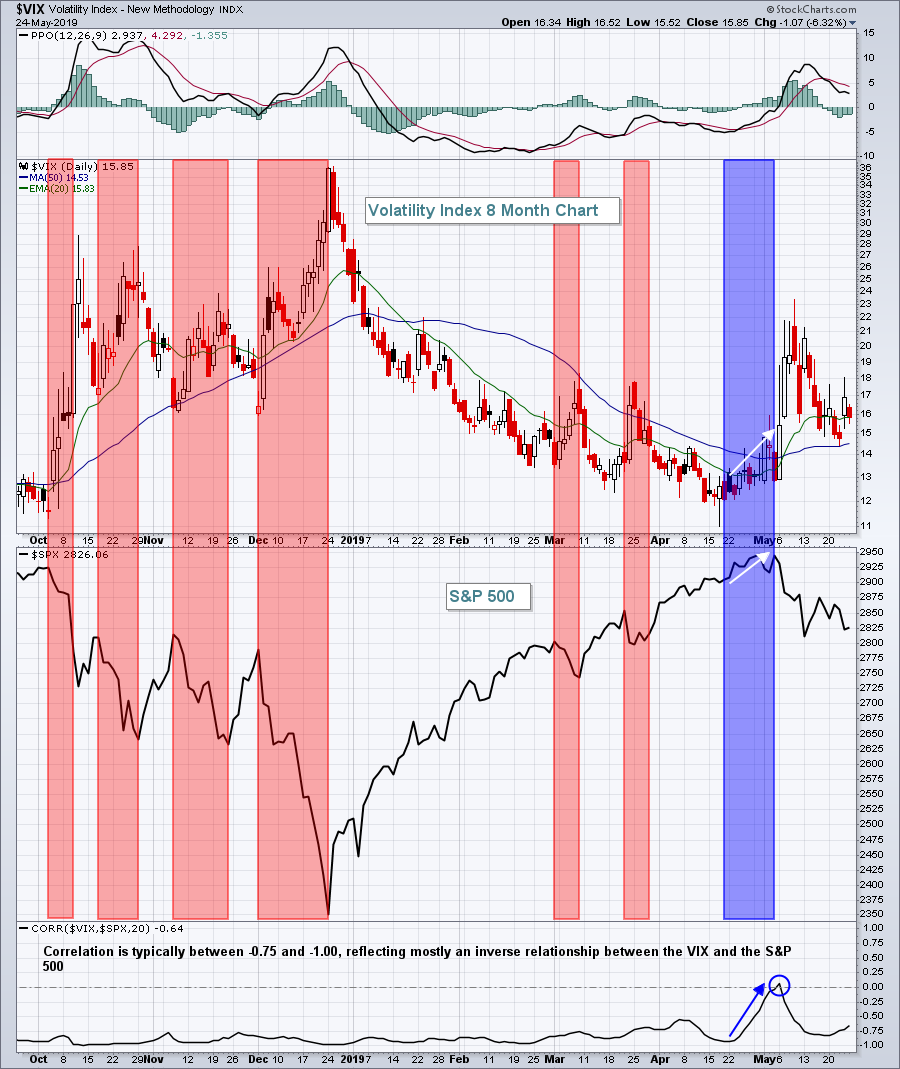There are no perfect signals that scream "GET OUT" of equities, but there are warning signs.....so long as you know where to find them. Most market participants believe in the random walk theory, which suggests that changes in stock prices have the same distribution and are independent of each other. Therefore, the assumption is that past stock market movements or trends cannot be used to predict its future movement.
I beg to differ.
Sentiment swings back and forth. I think if we're all honest with ourselves, we know that we generally grow overly bullish and overly bearish the stock market at just the wrong times. It's human nature. Don't beat yourself up, it happens to us all. But what if there was a mechanism to signal when sentiment was heading too far in one direction or the other?
There is and it's called the Volatility Index ($VIX). Here's the CBOE's explanation of the VIX and how it's calculated:
"The VIX Index is a financial benchmark designed to be an up-to-the-minute market estimate of expected volatility of the S&P 500 index, and is calculated by using the midpoint of real-time S&P 500 index option bid/ask quotes. More specifically, the VIX Index is intended to provide an instantaneous measure of how much the market thinks the S&P 500 Index will fluctuate in the 30 days from the time of each tick of the VIX Index."
On the charts, the VIX rises as the S&P 500 declines. That's the normal relationship and it's illustrated here:
 The red-shaded areas highlight the fact that the VIX rises significantly when the S&P 500 declines. When the S&P 500 rises, volatility diminishes. Hence, the correlation readings that are at or near -1.00 throughout much of the period above. The part that was interesting, however, was the blue-shaded area. At the last high on the S&P 500 in early May, the VIX was already on the rise! Correlation was already turning positive. Should we consider this as a potential warning sign of a top? Let's go back in time and see how often this signal is triggered and what the after-effect was:
The red-shaded areas highlight the fact that the VIX rises significantly when the S&P 500 declines. When the S&P 500 rises, volatility diminishes. Hence, the correlation readings that are at or near -1.00 throughout much of the period above. The part that was interesting, however, was the blue-shaded area. At the last high on the S&P 500 in early May, the VIX was already on the rise! Correlation was already turning positive. Should we consider this as a potential warning sign of a top? Let's go back in time and see how often this signal is triggered and what the after-effect was:
 What do you think? I think this signal is a keeper! When the stock market is rising and the VIX is rising simultaneously, it's telling us the market is getting nervous. And when the market is nervous, we should be nervous! Of those seven signals, six gave us very solid warnings that we were going to see a drop. Keep in mind, these signals don't suggest we're entering a bear market. They simply tell us that the market is getting nervous and that we should consider moving some or all of our portfolio to cash or perhaps move to defensive sectors from aggressive sectors.
What do you think? I think this signal is a keeper! When the stock market is rising and the VIX is rising simultaneously, it's telling us the market is getting nervous. And when the market is nervous, we should be nervous! Of those seven signals, six gave us very solid warnings that we were going to see a drop. Keep in mind, these signals don't suggest we're entering a bear market. They simply tell us that the market is getting nervous and that we should consider moving some or all of our portfolio to cash or perhaps move to defensive sectors from aggressive sectors.
I've discussed market bottoms on many occasions and I'm planning to do so again on Tuesday at 4:30pm EST in a FREE joint webinar with John Hopkins, President of EarningsBeats.com. Spotting market bottoms is based on two different sentiment indicators that are remarkably accurate. Join us on Tuesday and I'll show you how I do it. CLICK HERE to register.
Happy trading!
Tom






